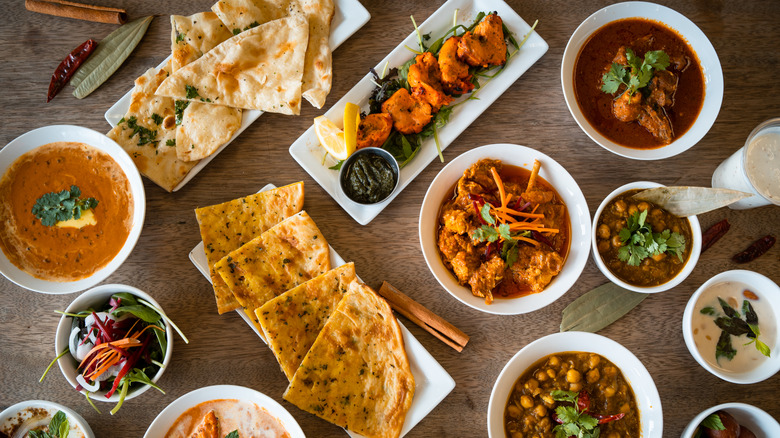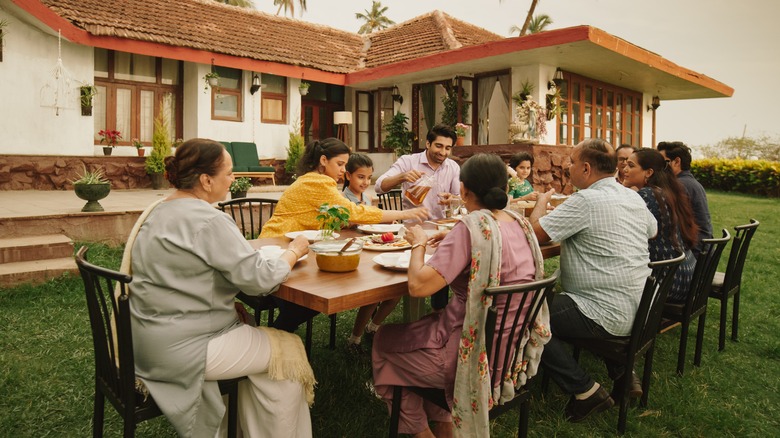The Reason You Should Share Food When Dining At An Indian Restaurant
Americans are accustomed to scarfing down quick midday lunches and ordering meals separately at restaurants. Other countries have a very different mindset when it comes to slowly enjoying a meal, viewing it as a special occasion worth sharing. In India, lunch and dinner are prepared in a grand spread for extended families and friends to partake in. This social tradition stems from India's rich culinary history and its people strive to observe mealtime etiquette no matter where their hunger may lead them. Whether it's an authentic, home-cooked feast or a local Indian restaurant, it's believed that sharing Indian food with others is the proper way to fully enjoy it.
A big factor that encourages meal sharing in Indian homes and restaurants is eating from a thali. This is a large tray of food presented to the table, where you're expected to serve yourself buffet-style and eat everything you put on your plate. Individual courses aren't part of India's dining culture. When each person orders a different dish at a restaurant, it's typical to share. "Sharing", in this case, doesn't mean waving a morsel of food around on a fork or spoon for someone to gobble up. It also doesn't mean sharing your actual plate. If someone wants to try your food, you'd simply dish it directly out of the thali or original container and serve it to them. Bonding over delicious food is the norm and it's special every time.
The goal is to turn an ordinary meal into an experience
Any home chef or holiday host knows that it takes a considerable amount of time and effort to craft a huge meal for others to enjoy. Such labors of love are carefully displayed and appreciated in India and are not something to be taken for granted. Complex spice blends are expertly layered into popular Indian foods like curries or chicken tikka masala and scooped up with fluffy slabs of naan. Veggies, rice, and lentils are some dietary staples that wind their way into many dishes, and fresh seafood is procured with care. There's a lot to be thankful for when such a labor-intensive meal is prepared for a big group, giving everyone something to look forward to each day.
Taking notes? Even if you're just discovering your favorite dishes at some of the best Indian restaurants in the U.S. rather than scoring some traditional home cooking, bring friends or family to see how having company can make all the difference. Of course, you don't have to adhere to some of India's more specific rules of etiquette, like ditching the silverware and only eating with your right hand. You may find that approaching more of your weekly meals as a social event, big or small, could do wonders, though. The time spent with loved ones could turn any mundane dinner into a memorable experience worth sharing over and over.

